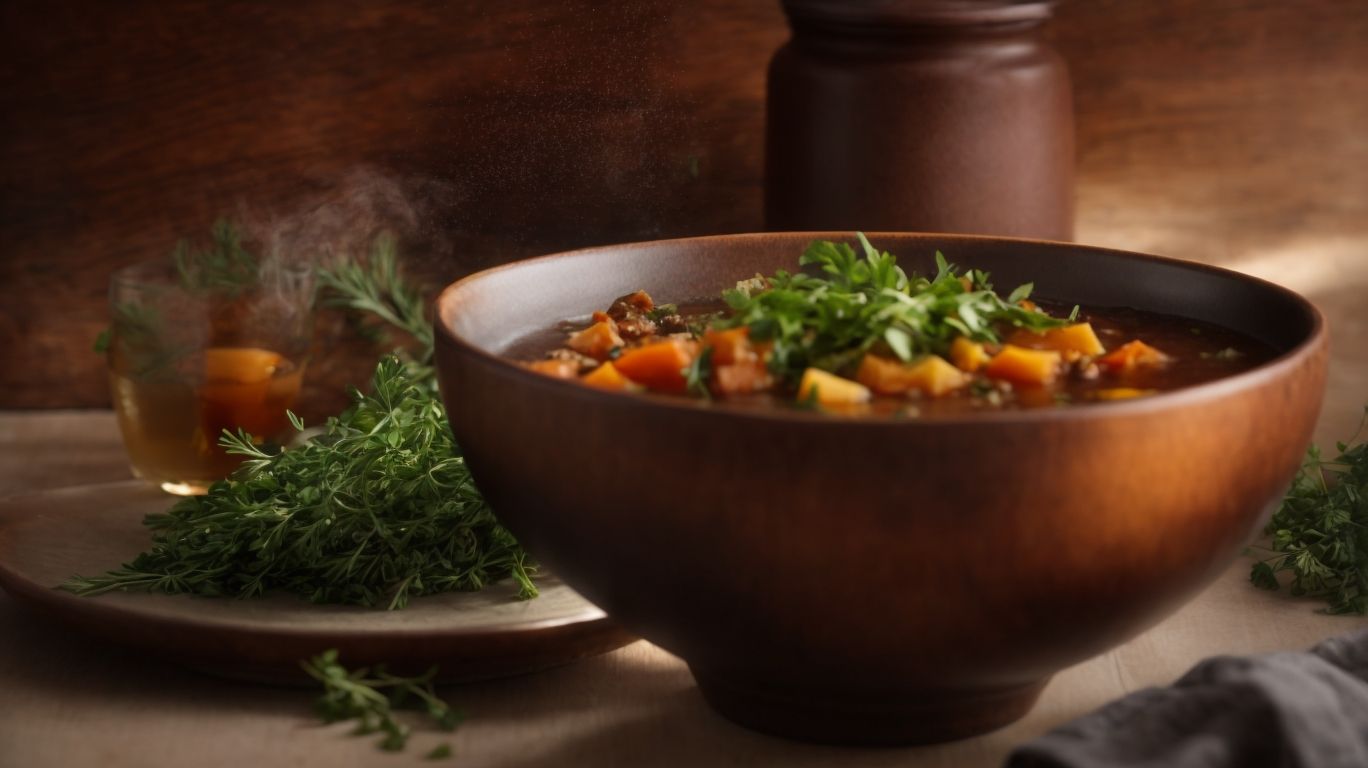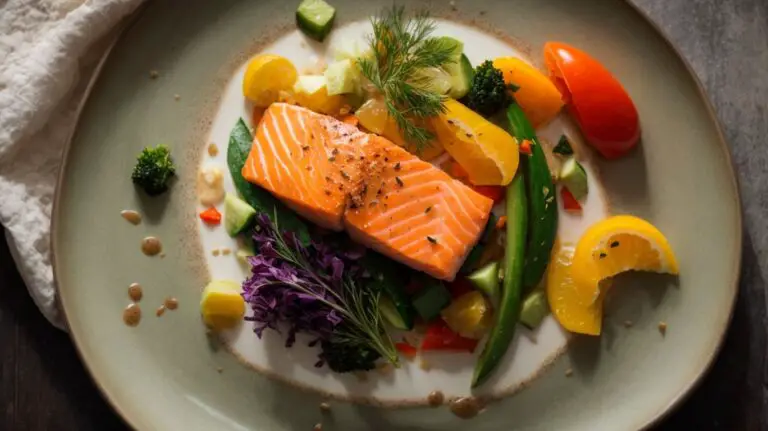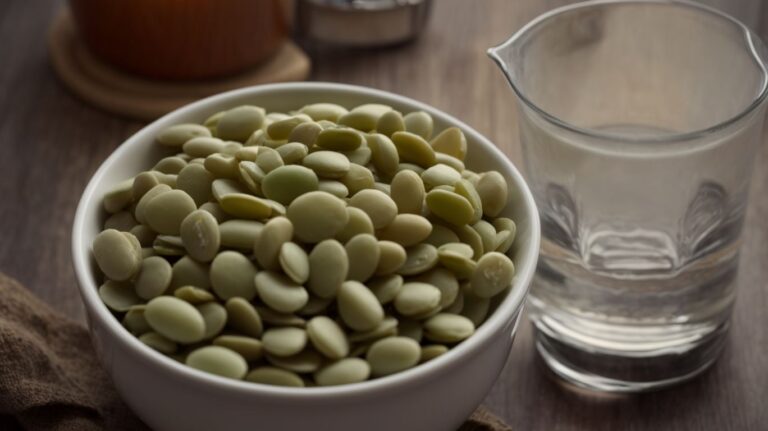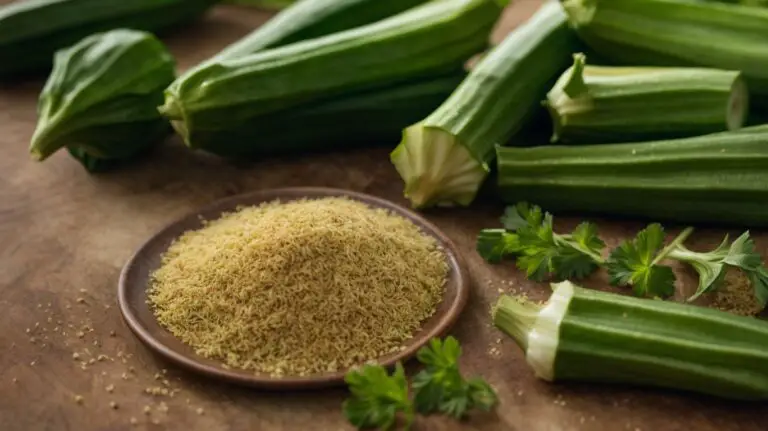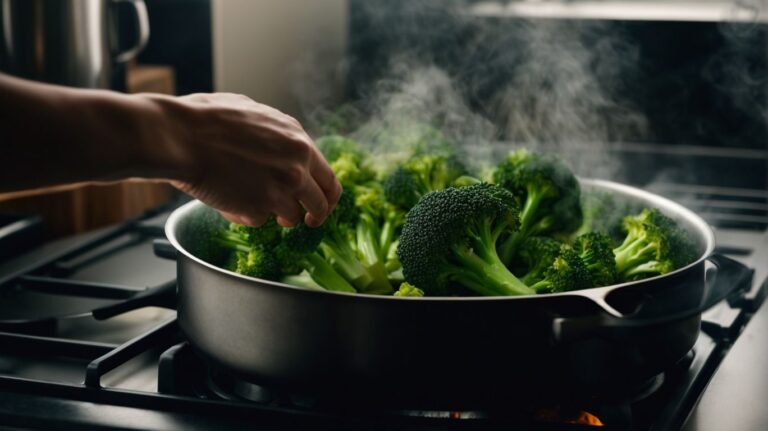How to Cook Roasted Kasha?
Are you looking to add a nutritious and delicious dish to your culinary repertoire? Look no further than Kasha!
In this article, we will explore the origins of Kasha, its health benefits, different types available, and most importantly, how to cook Roasted Kasha.
Join me, Chris Poormet, as we dive into the world of this versatile grain and discover some mouthwatering recipes that will elevate your cooking game.
Stay tuned for all the tips and tricks you need to make the perfect Roasted Kasha.
Key Takeaways:
About the Author: Chris Poormet

Credits: Poormet.Com – Joshua Smith
Chris Poormet, the owner of Poormet.com, is a renowned Culinary Blogger of the Year with a background as a former chef and expertise in food photography. His dedication has garnered a loyal following.
One of the reasons behind Chris Poormet’s success is his unique combination of culinary skills and artistic flair, which are evident in both his delicious recipes and visually stunning food photography. His blog serves as a platform for sharing his passion for cooking and photography, inspiring a vast audience of food enthusiasts to explore their creativity in the kitchen.
Chris’s accolades include being featured in prestigious culinary magazines and websites, further solidifying his reputation as an influential figure in the food industry. His innovative approach to recipe development and storytelling has set him apart from other food bloggers, earning him a loyal following that eagerly anticipates each new post.
What is Kasha?
Kasha, a type of grain, offers a distinctive flavor profile with a unique texture that sets it apart from other grains.
Kasha, also known as buckwheat groats, boasts a robust, nutty taste that adds depth to dishes.
Its texture is both tender and slightly crunchy, providing a delightful contrast in both sweet and savory recipes.
One of the key characteristics that make kasha stand out is its ability to absorb flavors, making it a versatile ingredient for various cuisines.
What is the Origin of Kasha?
Kasha has its origins in Russian and Eastern European cuisines, often leading to confusion due to misnomers and varied terminology.
Historically, kasha was a staple food in these regions due to its affordability, long shelf life, and high nutritional value. The term ‘kasha’ itself is a generic word for porridge in Russian, encompassing various types made from different grains like buckwheat, barley, and oats. In Eastern European countries like Poland and Ukraine, kasha is known as ‘kasza.’
Despite the term ‘kasha’ being commonly associated with buckwheat groats in Western countries, the broader use of the term in its home region shows the diverse nature of this traditional dish.
What are the Health Benefits of Kasha?
Kasha is a healthy choice packed with nutrients like fiber, protein, iron, vitamin B6, and magnesium, benefiting the immune system and overall well-being.
Fiber is crucial for maintaining digestive health and promoting satiety, which can aid in weight management. The high-quality protein found in kasha supports muscle maintenance and repair. Iron is essential for oxygen transport in the body, while vitamin B6 contributes to brain function and metabolism.
Magnesium plays a vital role in various biochemical reactions, including energy production and muscle function. These nutrients collectively work to strengthen the immune system, protect against illnesses, and contribute to overall wellness.
What are the Different Types of Kasha?
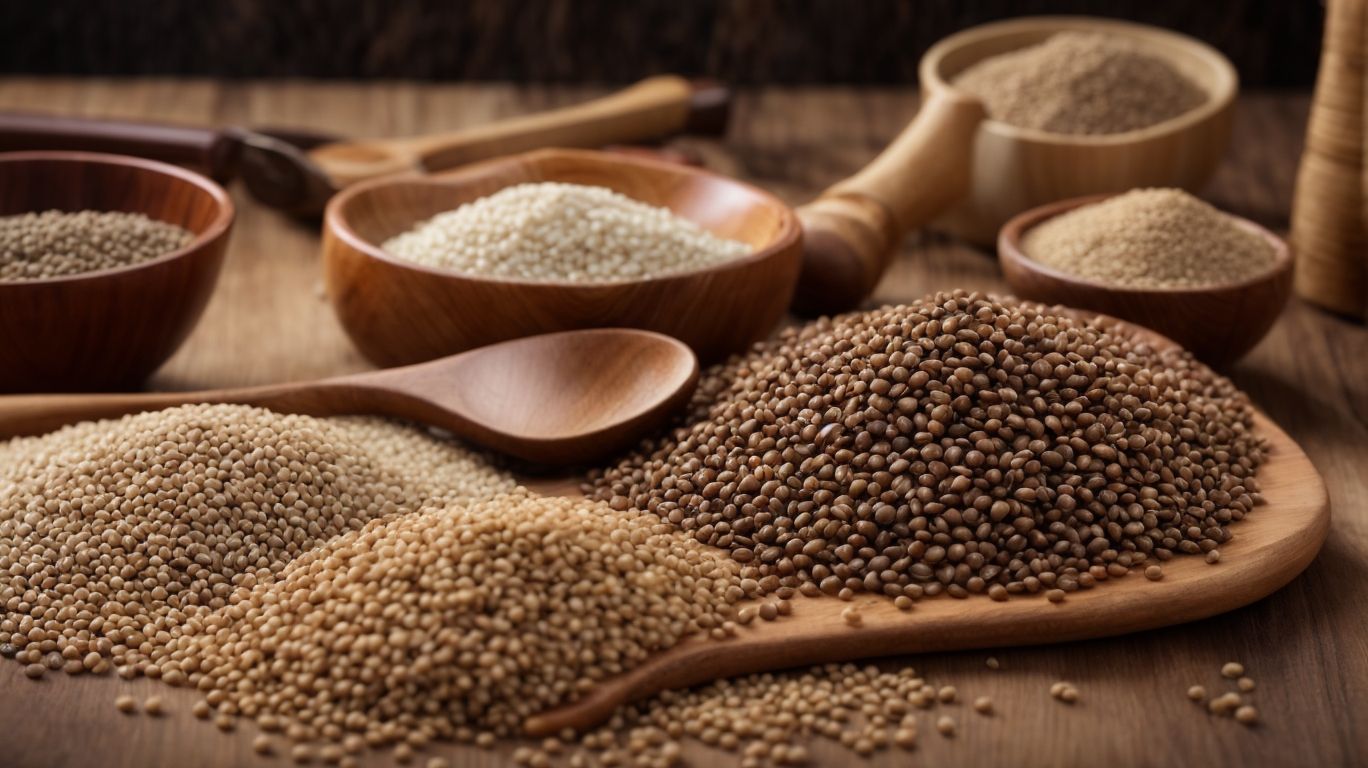
Credits: Poormet.Com – Randy Martin
There are various types of kasha, including Buckwheat Kasha, Millet Kasha, and Quinoa Kasha, each offering unique flavors and textures.
Buckwheat Kasha is known for its nutty flavor and chewy texture, making it a versatile option for both sweet and savory dishes.
On the other hand, Millet Kasha has a mild, slightly sweet taste and a fluffy consistency, perfect for complementing a range of ingredients.
Lastly, Quinoa Kasha stands out with its distinct earthy flavor and delicate crunch, adding a rich and satisfying element to meals. By exploring these different types of kasha, you can elevate your culinary experiences with a variety of tastes and textures.
Buckwheat Kasha
Buckwheat Kasha stands out for its versatility, gluten-free nature, and a texture resembling white rice.
The beauty of Buckwheat Kasha lies in its ability to take on various flavors and accompaniments, making it a versatile ingredient in both sweet and savory dishes. This nutrient-rich pseudocereal is packed with fiber, protein, and essential minerals, contributing to its growing popularity in modern diets.
Notably, its gluten-free status offers a great alternative for individuals with celiac disease or gluten sensitivities. The mild, nutty flavor of Buckwheat Kasha pairs well with different spices and herbs, enhancing the taste of dishes while providing a satisfying chewy texture.
Millet Kasha
Millet Kasha offers a delightful mix of savory and sweet flavors, making it a versatile side dish option.
The savory notes in Millet Kasha are brought out by toasting the millet before cooking, resulting in a nutty undertone that complements dishes ranging from hearty stews to grilled vegetables. Simultaneously, the natural sweetness of the millet enhances the overall flavor profile, making it a favorite among those looking for a unique twist on traditional grains.
Quinoa Kasha
Quinoa Kasha serves as a wholesome meal option and a refreshing addition to salads, offering diverse preparation instructions.
Whether you are looking to whip up a hearty dinner or create a light and nutritious lunch, Quinoa Kasha can meet your culinary needs while delivering a burst of flavors and textures. This versatile pseudo-grain can be boiled, steamed, or toasted, presenting a range of cooking methods to explore. To enhance its nutritional profile, consider mixing in colorful vegetables, protein-rich beans, and a drizzle of flavorful dressing for a complete meal experience. Toss cooked Quinoa Kasha with leafy greens, ripe fruits, and a sprinkle of nuts to elevate your salad game to the next level.
How to Cook Roasted Kasha?

Credits: Poormet.Com – Bradley Campbell
Cooking Roasted Kasha involves a specific method and combination of ingredients, including water, to achieve optimal results.
Begin by rinsing the kasha under cold water to remove any excess starch.
Then, heat a pan over medium heat and add the kasha, toasting it until it becomes aromatic.
Boil 2 cups of water in a separate pot, then carefully pour it over the toasted kasha.
Season with salt and stir well.
Cover the pot and let it simmer for about 15-20 minutes, or until the kasha is tender and the water is absorbed.
Fluff the kasha with a fork before serving, and garnish with fresh herbs for added flavor.
Ingredients for Roasted Kasha
To prepare Roasted Kasha, gather essential ingredients like oil and salt to complement its flavors as a delectable side dish.
You will need Kasha, water, and any desired seasoning such as herbs or spices to elevate its taste even further. The oil plays a crucial role in coating the Kasha grains, helping them to crisp up during the roasting process, while the salt not only enhances the natural flavors of the dish but also provides a perfect balance of seasoning. By carefully drizzling the oil and sprinkling the salt over the Kasha before roasting, you pave the way for an irresistibly crispy, savory side dish that will leave your taste buds wanting more.
Step-by-Step Guide to Cooking Roasted Kasha
Follow this step-by-step guide to master the process of cooking Roasted Kasha, involving stirring and precise instructions for optimal results.
-
Begin by preheating your oven to 375°F (190°C) and preparing a baking sheet lined with parchment paper.
-
Next, in a bowl, combine 1 cup of kasha with 2 cups of boiling water, stirring well to prevent clumping.
-
Spread the kasha mixture evenly on the prepared baking sheet, ensuring a thin layer for even roasting.
-
Place the baking sheet in the preheated oven and let the kasha roast for about 20-25 minutes, stirring every 5 minutes to ensure all sides are evenly toasted.
-
Once the kasha turns a golden brown color, remove it from the oven and let it cool before serving.
What are Some Tips for Making the Perfect Roasted Kasha?
Enhance the flavor and texture of your Roasted Kasha with these expert tips to achieve exceptional results.
One of the key ways to elevate the taste profile of your Roasted Kasha is by enhancing the seasoning. Experiment with spices like cumin, paprika, or thyme to add depth and complexity.
Consider incorporating ingredients such as mushrooms or sun-dried tomatoes for a burst of flavor that complements the nuttiness of the kasha.
To achieve a perfect balance of textures, ensure your kasha is cooked just right – not too mushy or too firm. Aim for a tender yet slightly chewy consistency that keeps each grain distinct.
What are Some Delicious Recipes Using Roasted Kasha?
Explore a variety of exquisite recipes featuring Roasted Kasha, including Roasted Kasha Salad, Roasted Kasha with Vegetables, and Roasted Kasha Porridge.
Starting with Roasted Kasha Salad, this refreshing dish combines the nuttiness of roasted kasha with crisp, fresh vegetables and a zesty vinaigrette dressing that tantalizes your taste buds.
For a heartier meal, try Roasted Kasha with Vegetables, where the roasted kasha is paired with a colorful array of seasonal vegetables, creating a satisfying and wholesome main course.
And when looking for a warm and cozy breakfast option, whip up Roasted Kasha Porridge, blending creamy milk, honey, and a sprinkle of cinnamon with roasted kasha for a comforting start to your day.
Roasted Kasha Salad
Indulge in the flavorful Roasted Kasha Salad, a delightful meal that features a blend of mushroom and onion for a savory experience.
This hearty Roasted Kasha Salad not only serves as a delicious meal option but also provides a wholesome serving of essential nutrients. The earthy flavors of the mushrooms and the sweetness of the caramelized onions perfectly complement the nutty undertones of the kasha, creating a symphony of tastes in every bite.
Crafting this salad involves roasting the kasha until it’s golden and fluffy, then combining it with sautéed mushrooms and onions dressed with a tangy vinaigrette. The addition of fresh herbs adds a burst of freshness, making each forkful a culinary adventure.
Roasted Kasha with Vegetables
Savor the wholesome Roasted Kasha with Vegetables, a fantastic side dish that requires minimal cooking time and offers maximum flavor.
Combining the nutty goodness of kasha with an array of colorful vegetables not only enhances the taste but also boosts the nutritional value of this dish. To prepare this delightful recipe, start by sautéing onions and garlic until fragrant, then add chopped bell peppers, zucchini, and cherry tomatoes for a burst of freshness. Incorporating a medley of spices such as paprika and thyme elevates the flavor profile. Bake the kasha and vegetable mixture until the kasha is tender and the vegetables are caramelized, resulting in a dish that is both visually appealing and delicious.
Roasted Kasha Porridge
Delight in the comforting Roasted Kasha Porridge, a sweet and satisfying dish that requires meticulous preparation for a delightful mealtime experience.
Roasted Kasha Porridge is a flavorful blend of roasted kasha, warm spices, and sweet ingredients, making it a popular choice for those seeking a hearty and nutritious breakfast option. To create this delectable dish, start by toasting the kasha in a dry pan until fragrant. Then, simmer it gently in milk or water, adding in cinnamon, vanilla, and a touch of honey or maple syrup for sweetness.
The result is a creamy, slightly nutty porridge with a hint of sweetness that pairs perfectly with fresh fruits, nuts, or a drizzle of additional honey. This delicious and aromatic porridge is not only a treat for the taste buds but also a nourishing way to start your day.
Where Can You Purchase Kasha?
Discover the best sources to purchase high-quality Kasha, including reputable stores, well-packaged options, and trusted brands for a premium culinary experience.
When looking to buy top-tier Kasha products, it is important to consider stores known for their commitment to quality and authenticity. Specialized health food stores, organic markets, and online retailers dedicated to natural ingredients are prime spots to find premium Kasha varieties.
In terms of packaging, opt for options that are airtight and resealable to ensure freshness and longevity. Look for brands that prioritize sustainable and eco-friendly packaging practices to align with your values.
Brands like Organic Harvest and Nature’s Best are revered for their high-quality Kasha products, offering a blend of health benefits and exceptional taste that elevate any culinary creation.
Final Thoughts on Cooking Roasted Kasha
Mastering the preparation of Roasted Kasha requires attention to detail, commitment to quality ingredients, and adherence to the cooking process for exceptional results.
Roasted Kasha, a traditional dish with a rich history, demands precision at every step. From selecting the finest Kasha grain to carefully measuring out the seasonings, every aspect plays a crucial role in the final flavor profile. Patience is key; allowing the dish to roast slowly ensures the flavors meld together harmoniously, creating a truly memorable dining experience.
- By focusing on the smallest details, such as the toasting of the grain and the proper resting time before serving, you elevate the dish to gourmet levels.
- A commitment to using fresh, high-quality ingredients further enhances the dish’s depth of flavor and nutritional value.
- Remember, culinary excellence is achieved not only through skill but through unwavering dedication to the craft.
Frequently Asked Questions
1. How to Cook Roasted Kasha?
Cooking roasted kasha is a simple and delicious way to enjoy this nutritious grain. Follow these easy steps for a perfect dish every time.
2. What is roasted kasha?
Roasted kasha is a type of buckwheat that has been toasted to bring out its nutty and earthy flavors. It is commonly used in Eastern European cuisine and is a great source of protein and fiber.
3. How do I prepare roasted kasha?
To prepare roasted kasha, start by rinsing it in a fine-mesh strainer. Then, add the kasha to a pot of boiling water and cook for about 15 minutes, until it is tender. Drain any excess water and fluff the kasha with a fork.
4. Can I add any other ingredients to my roasted kasha?
Absolutely! You can add in your favorite herbs and spices, vegetables, or even protein like chicken or tofu to make a more filling dish. Get creative and experiment with different flavors to find your perfect kasha recipe.
5. How do I serve roasted kasha?
Roasted kasha can be served as a side dish or as a main dish with added ingredients. It pairs well with roasted vegetables, grilled meats, or can be used as a base for a grain bowl. The options are endless!
6. Is roasted kasha gluten-free?
Yes, roasted kasha is gluten-free and can be enjoyed by those with gluten sensitivities or celiac disease. It is a great alternative to other grains like wheat and barley.

